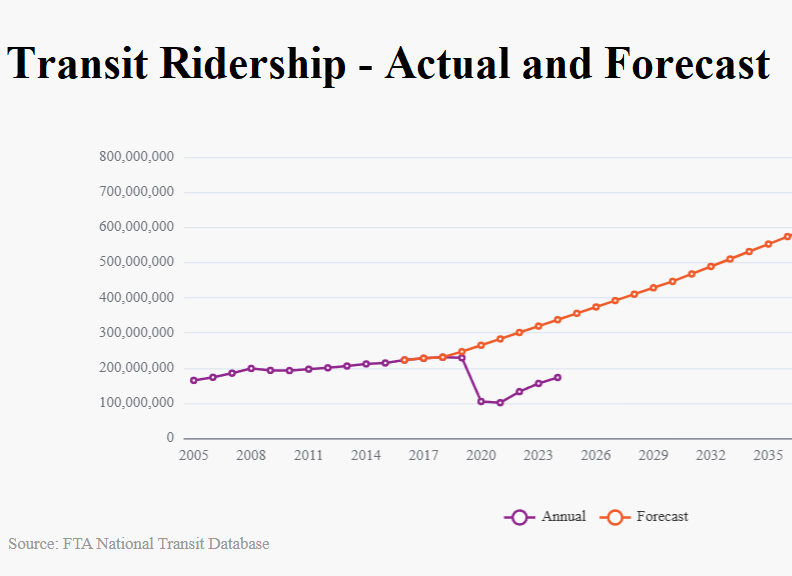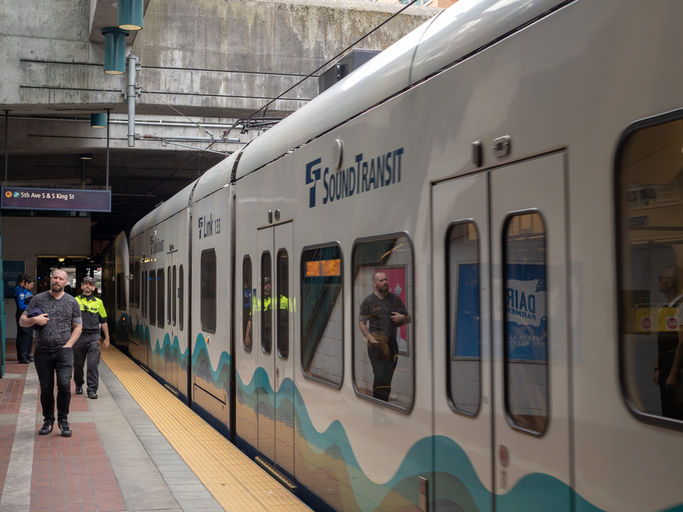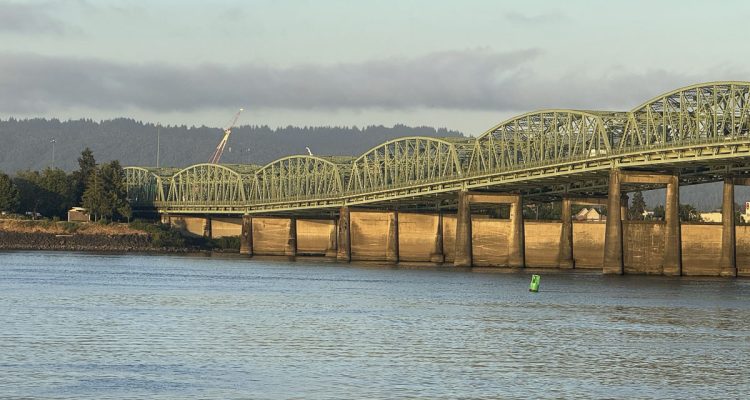
(Image credit: Puget Sound Regional Council)
Two Sound Transit developments have been in the news this month. First was the ribbon-cutting ceremony and celebration for opening of the light rail station in Redmond, which received extensive media coverage. The second development, mentioned by Sound Transit CEO Dow Constantine in a board meeting, was that light rail service across Lake Washington has been further delayed with a start date now expected in early 2026. That date, still tentative, is more than five years beyond the 2020 opening called for in the ST2 plan presented to voters back in 2008.
The starter segment between Bellevue and Redmond, which began operation in 2024, has been carrying only about 3,000 riders per day. That is well below Sound Transit’s forecast of 5,000 riders per day, which is an underwhelming number for a transit project that took fifteen years to build and cost over a billion dollars. Light rail boosters would likely point out that it is too soon to judge performance. The expectation is that when the line across the Lake finally connects with the line to Redmond ridership will increase, maybe by a substantial amount. But before we jump on the light rail bandwagon it is instructive to look at the regional trend in transit ridership.
Sound Transit has been quick to emphasize any increase in light rail ridership, and it did increase from just over 23 million in 2017 to nearly 29.5 million in 2024, mostly due to extension of the line to Northgate and Lynnwood. However, the increase in light rail ridership was more than offset by decreases in ridership on Sound Transit’s express bus and commuter rail services. Those transit modes lost more than 12 million riders over the same seven-year period. As a result, Sound Transit’s total ridership actually decreased from 45.8 million in 2017 to 40.1 million in 2024 despite expansion of the light rail system and population growth that added 400,000 residents. The overall trend, which Sound Transit’s press releases don’t mention, should be a regular item on the board agenda.
Sound Transit’s light rail lines account for only about a sixth of total transit ridership in the region. To get a better sense of the big picture we need to look at ridership trends for the other major transit providers. As can be seen in the table below, it isn’t an encouraging picture.
| 2017 | 2024 | ||
| Sound Transit | |||
| Link | 23,002,263 | 29,479.00 | |
| Express Bus | 18,374,834 | 8,722,640 | |
| Sounder | 4,445,562 | 1,916,429 | |
| Metro | |||
| Bus | 101,129,569 | 72,304,880 | |
| Trolley Bus | 19,339,147 | 11,025,543 | |
| Community Transit | |||
| Bus | 6,413,837 | 7,039,896 | |
| Commuter Bus | 2,889,849 | 786,154 | |
| Pierce Transit | |||
| Bus | 8,543,157 | 6,768,075 | |
| Total | 184,138,224 | 148,042,720 | |
All four of the major transit providers in the region reported lower ridership in 2024 than they did in 2017. I suppose you could look at this discouraging trend and say the small increase in light rail ridership is a bright spot since the other modes decreased, but we need to keep in mind the majority of light rail riders were bus riders who shifted modes when their bus routes were discontinued or truncated. The ridership totals don’t tell us how many riders made that switch, or how many began working from home, but they do show that for every light rail rider Sound Transit gained Metro lost six bus riders.
The situation with Community Transit is similar. When light rail was extended to Mountlake Terrace and Lynnwood in 2024, Community Transit eliminated most of their inter-county commuter routes. This boosted ridership on the new light rail line, but CT’s remaining commuter service carried two million fewer riders in 2024 than it did in 2017.
Transportation analysts and policy wonks have offered various reasons for the observed trends, including lingering effects of COVID, more working from home, personal safety concerns on transit, and continuing de-centralization of employment. All of those things may be influencing travel behavior, but elected policy-makers and planners need to focus on what the trends mean for the region’s plans and transportation budgets. Conclusions that merit consideration:
- The transit ridership forecasts used in state and local plans are far too optimistic. For example, there is no credible scenario where annual transit ridership grows to anything approaching the 400,000,000 rides the Puget Sound Regional Council’s plan assumes for 2030. The region will be lucky if ridership returns to pre-COVID levels by 2030.
- Expansion of the light rail system will not reverse the region’s unfavorable trends. The incremental increase in light rail ridership is small and many of the light rail riders are former bus riders who have switched when their bus routes were eliminated. Under current plans overall transit mode share is unlikely to grow beyond the low single digits.
- The high cost of light rail extensions ($300 million per mile or more) and the small net increase in transit ridership indicate current plans have a very poor return on public investment.
Over the next two years the Puget Sound Regional Council, the Washington State Transportation Commission, and numerous cities and transit agencies will be updating their plans. They should take this opportunity to revisit plan assumptions and adjust forecasts to bring them into alignment with reality. In the planning realm wishful thinking is a vice rather than a virtue.





